“There are only three ways to deal with a blackmailer. You can pay him and pay him and pay him until you’re penniless. Or you can call the police yourself and let your secret be known to the world. Or you can kill him.”——Richard Wanley to Alice Reed
After years of following the movies, it’s something of a surprise, and always a thrill, to discover a “new” movie—and a good one at that. Excellent, really. Thanks to PBS, I’ve just seen for the first time what is actually an old movie—old movies are always the best kind—a 1944 film noir, The Woman in the Window, starring Edward G. Robinson, Joan Bennett, Raymond Massey and Dan Duryea.
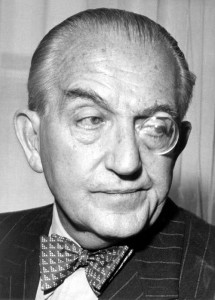 As so often in practically any randomly selected movie of the ’30s and ’40s, The Woman in the Window evolved thanks to its inspired creators: director Fritz Lang, this perhaps his most impressive film of that decade; cinematographer Milton Krasner of All About Eve and The Dark Mirror fame; and that busy screenwriter Nunnally Johnson, who would also script The Dark Mirror in 1946. Even the score, done by, admitted, a second-stringer, Arthur Lange, is quite appropriate to the subject and tone of the film. Like the performances, except for Duryea’s flamboyance, the music is very subtle and underplays even the most melodramatic moments. Lange had the uncredited help of Hugo Friedhofer, which may account for some of the music’s effectiveness.
As so often in practically any randomly selected movie of the ’30s and ’40s, The Woman in the Window evolved thanks to its inspired creators: director Fritz Lang, this perhaps his most impressive film of that decade; cinematographer Milton Krasner of All About Eve and The Dark Mirror fame; and that busy screenwriter Nunnally Johnson, who would also script The Dark Mirror in 1946. Even the score, done by, admitted, a second-stringer, Arthur Lange, is quite appropriate to the subject and tone of the film. Like the performances, except for Duryea’s flamboyance, the music is very subtle and underplays even the most melodramatic moments. Lange had the uncredited help of Hugo Friedhofer, which may account for some of the music’s effectiveness.
The “woman” in the window isn’t really a woman but a painting, a painting reminiscent of the one in Laura, another film noir made the same year. Brush strokes were added to a photograph of Gene Tierney for Laura; the portrait in The Woman in the Window is an actual painting of Joan Bennett.
I was totally swept into the story, never intimidated by its slow placing or the abundant dialogue.
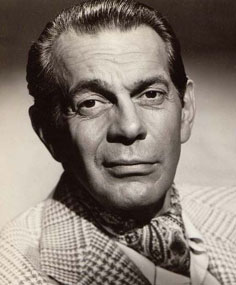 Much of the talking comes from District Attorney Frank Lalor (Massey) and physician Michael Barkstance, an actor whose laugh and “happy” voice I recognized from somewhere. Yes!, Edmund Breon as Julian Emery (“Stinky”), the music box collector who is murdered in Dressed to Kill, the last installment of Universal’s Basil Rathbone/Sherlock Holmes series.
Much of the talking comes from District Attorney Frank Lalor (Massey) and physician Michael Barkstance, an actor whose laugh and “happy” voice I recognized from somewhere. Yes!, Edmund Breon as Julian Emery (“Stinky”), the music box collector who is murdered in Dressed to Kill, the last installment of Universal’s Basil Rathbone/Sherlock Holmes series.
Arthur Loft would resurface in Scarlet Street, a similar film noir Fritz Lang would make in 1945, reuniting Robinson, Bennett and Duryea. In a crossover of minor supporting actors, I recognized the parking attendant as Alec Craig—the chart maker in a favorite, The Sea Hawk—and an eleven-year-old Robert Blake as the son of Wanley. Bobby was only four years from perhaps his best childhood role as the lottery ticket seller in John Huston’s The Treasure of the Sierra Madre.
And I kept count of the instances of mirrors and other reflections, traits of film noir and horror films—in the reflections of a store window, a glass bookcase door and a hotel front door. Mirrors form a solid wall behind the fireplace in the woman’s apartment, where much duplicity takes place. Remember the mirrors in Hitchcock’s Psycho?
And the wet streets and sidewalks—always wet, those streets!
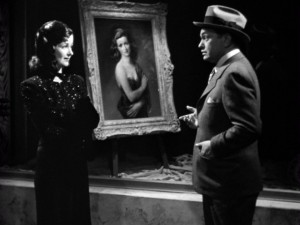 Professor Richard Wanley (Robinson) is a married man who becomes platonically involved with Alice Reed (Bennett), the subject of that painting in a store window. In self defense, he kills her boyfriend, Claude Mazard (Loft), and must dispose of the body.
Professor Richard Wanley (Robinson) is a married man who becomes platonically involved with Alice Reed (Bennett), the subject of that painting in a store window. In self defense, he kills her boyfriend, Claude Mazard (Loft), and must dispose of the body.
When Wanley goes for his car, and, later, when he’s transporting the body, there are at least three suspenseful moments when, susceptible to the old Hitchcock reversal of feelings, I was hoping the criminal would elude capture. A policeman stops him for having his car headlights off. “I thought the garage man had turned them on,” Wanley explains. He didn’t notice them being off—in the dark? Not especially convincing—a credibility weakness; there will be a few more in the script.
At a toll booth, he drops the dime fee and the attendant calls him back, whereupon Wanley gives him a penny by mistake, then corrects it with a dime. An attempt at tension, but does it really work? Moments later, at a stop sign, Wanley screeches to a halt in time but uncomfortably eyes a motorcycle policeman poised in the bushes.
To thicken the plot, a stranger, Heidt (Duryea), who was following Mazard, blackmails Alice for what he suspects is her involvement in the man’s disappearance. She poisons his liquor and when he seems about to drink it, she takes his glass to the kitchen for more ice cubes. Since they had agreed to “go away together,” was she going to dump the poison? That occurred to me, but when she returns and he, suddenly suspicious, demands that she drink from his glass, she nervously refuses, making her move both foolish and cinematically unnecessary.
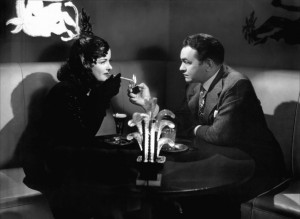 Wanley, as a member of the same gentleman’s club as Lalor and Barkstance, has the “good fortune,” if that’s the right phrase, to sit in on the results of Lalor’s investigation of the very crime he committed.
Wanley, as a member of the same gentleman’s club as Lalor and Barkstance, has the “good fortune,” if that’s the right phrase, to sit in on the results of Lalor’s investigation of the very crime he committed.
Defying basic logic, Lalor and Barkstance are repeatedly oblivious to each of Wanley’s slips, revealing an uncanny knowledge of the murder. The two men aren’t suspicious when Wanley refers to Mazard as “murdered” when the man is still only missing, mentions a barbed wire fence before Lalor identifies the kind of fence on which the suspect cut himself and takes the correct fork in a path to where the body was found. Lalor even makes the nonsensical comment, “We rarely arrest people just for knowing where the body was.” Jeez, wouldn’t that be sufficient grounds for doing so?! And the cut? Wanley, flouting common sense, voluntarily shows his companions the cut on his wrist, explaining it was from opening a tin can.
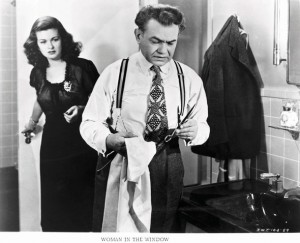 As I watched the movie the first time, I tried to imagine how it would end. Now Robinson—in an excellent, understated performance, I might add—is a likeable character, a man somewhat unhappy in his marriage and annoyed with his stodgy, middle age existence. In the events that befall him, he’s clearly an unfortunate victim of circumstance.
As I watched the movie the first time, I tried to imagine how it would end. Now Robinson—in an excellent, understated performance, I might add—is a likeable character, a man somewhat unhappy in his marriage and annoyed with his stodgy, middle age existence. In the events that befall him, he’s clearly an unfortunate victim of circumstance.
But I reasoned that he can’t get away with his crime, not with the Hayes Office breathing down his neck—this is 1944, after all. As in the case of Humphrey Bogart in Conflict (1945)—a pretty bad film, made between To Have and Have Not (not a favorite) and The Big Sleep—maybe, I thought, the police suspect Wanley and are working toward a confession or waiting for an incriminating slip. But hasn’t Wanley already made three slips?! . . .
By the time all was revealed—my thinking hadn’t gone beyond the Conflict hypothesis—the “trick” was upon me, and it was simply that, a trick, a cop out, really. Why hadn’t I thought of it? Maybe it was so obvious I didn’t see it. This stratagem, to use a loftier word than it deserves, is employed in other films of the mid-forties—Jack Benny’s The Horn Blows at Midnight and The Strange Affair of Uncle Harry. Even in The Wizard of Oz Dorothy wakes up to find it was all a dream.
Yes, perhaps prompted by that subtle discontent with his marriage and fascinated by the beautiful woman in the painting, Wanley had escaped reality in a dream. He had taken from the club’s bookcase a copy of Song of Solomon, settled into an easy chair and asked the attendant to notify him when it was ten-thirty.
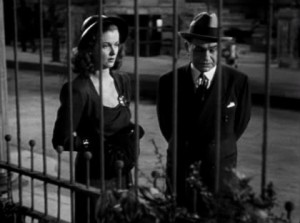 Better part of an hour later, when things became desperate for Wanley, he took an overdose of medicine to end it all. The guilty one committing suicide—that would satisfy the Hayes Office! Loosely holding an empty glass and slumped in the chair, his eyes flickering closed and his head dropping to one side, he’s making a good show at dying. But wait! A hand from outside the screen frame intrudes to shake his shoulder. “It’s ten-thirty, Mr. Wanley,” says the attendant.
Better part of an hour later, when things became desperate for Wanley, he took an overdose of medicine to end it all. The guilty one committing suicide—that would satisfy the Hayes Office! Loosely holding an empty glass and slumped in the chair, his eyes flickering closed and his head dropping to one side, he’s making a good show at dying. But wait! A hand from outside the screen frame intrudes to shake his shoulder. “It’s ten-thirty, Mr. Wanley,” says the attendant.
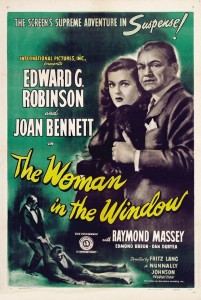
A wonderful film, Eddie G. is the best…he swallows the screen whole in whatever film he is in. I have the 1931 Clark Firefly lighter Robinson uses to light Bennett’s cigarette while they’re having drinks. It still works.